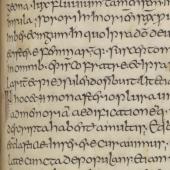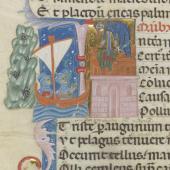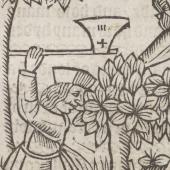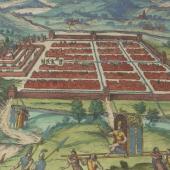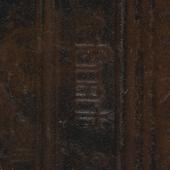A most valuable treasure both of printed books and manuscripts
His royal favour
As a wealthy antiquarian collector with excellent connections and acquisition opportunities, Moore was able to form a library of almost unparalleled range and importance. His library brought to Cambridge works that the University had failed so far to provide for its scholars–Newton’s Principia, Hooke’s Micrographia, a collected edition of Shakespeare (the 1685 fourth folio)–further emphasising the haphazard nature of its collections before 1715.
As well as the religious and classical texts expected of a clergyman-scholar, Moore’s collection included iconic works on architecture, medicine and law.
Alongside these printed volumes, Moore’s library included manuscripts of unique importance for British history, several of which–including the Bede shown here–bear his name. As a collector interested in books for their beauty as well as their content, Moore prefigured modern scholarship by three centuries, valuing the physical nature of the artefact as well as its role as carrier of information. Volumes from the Royal Library have been included in half of the exhibitions held in this space over the last 15 years, such is the importance of this single collection.
